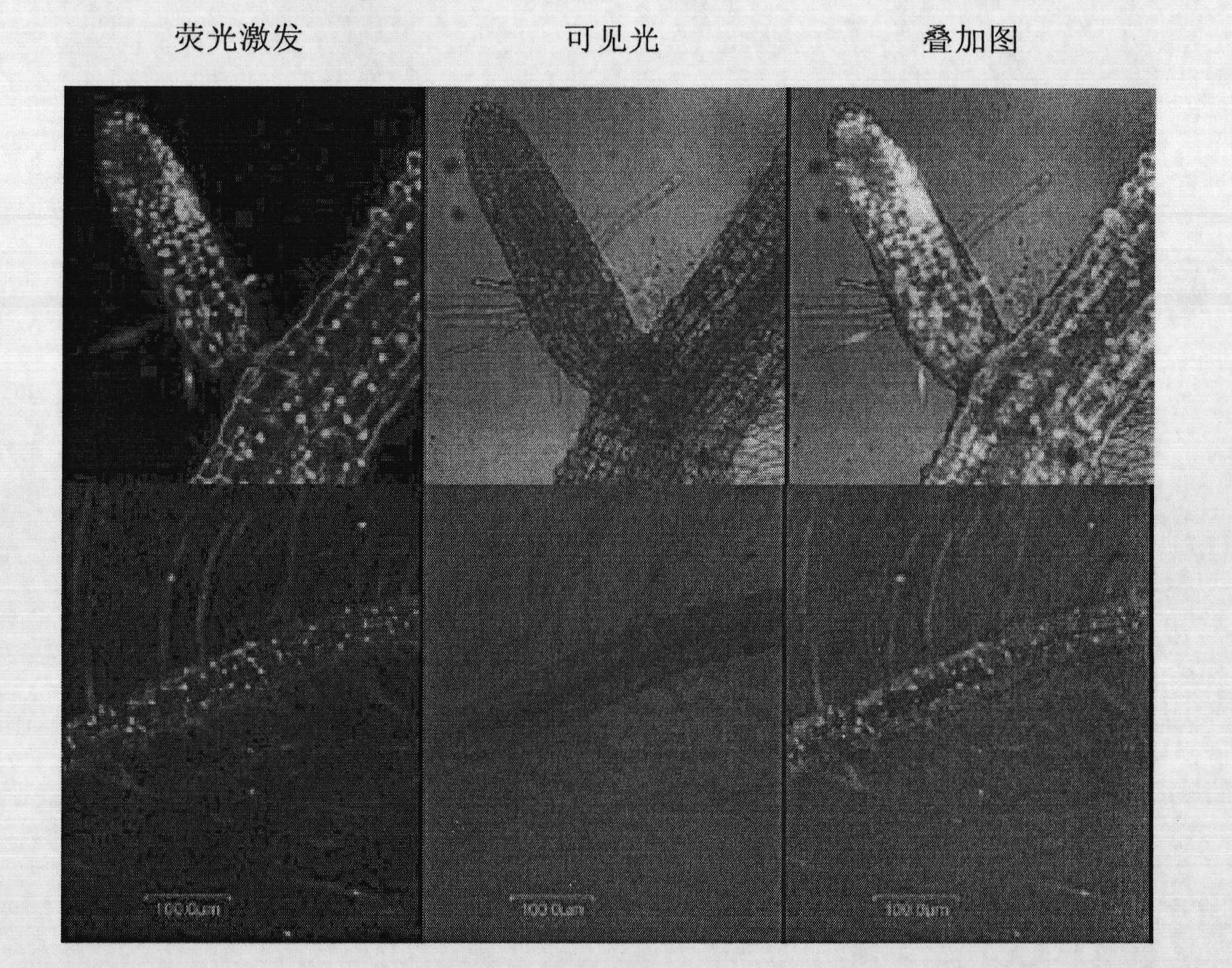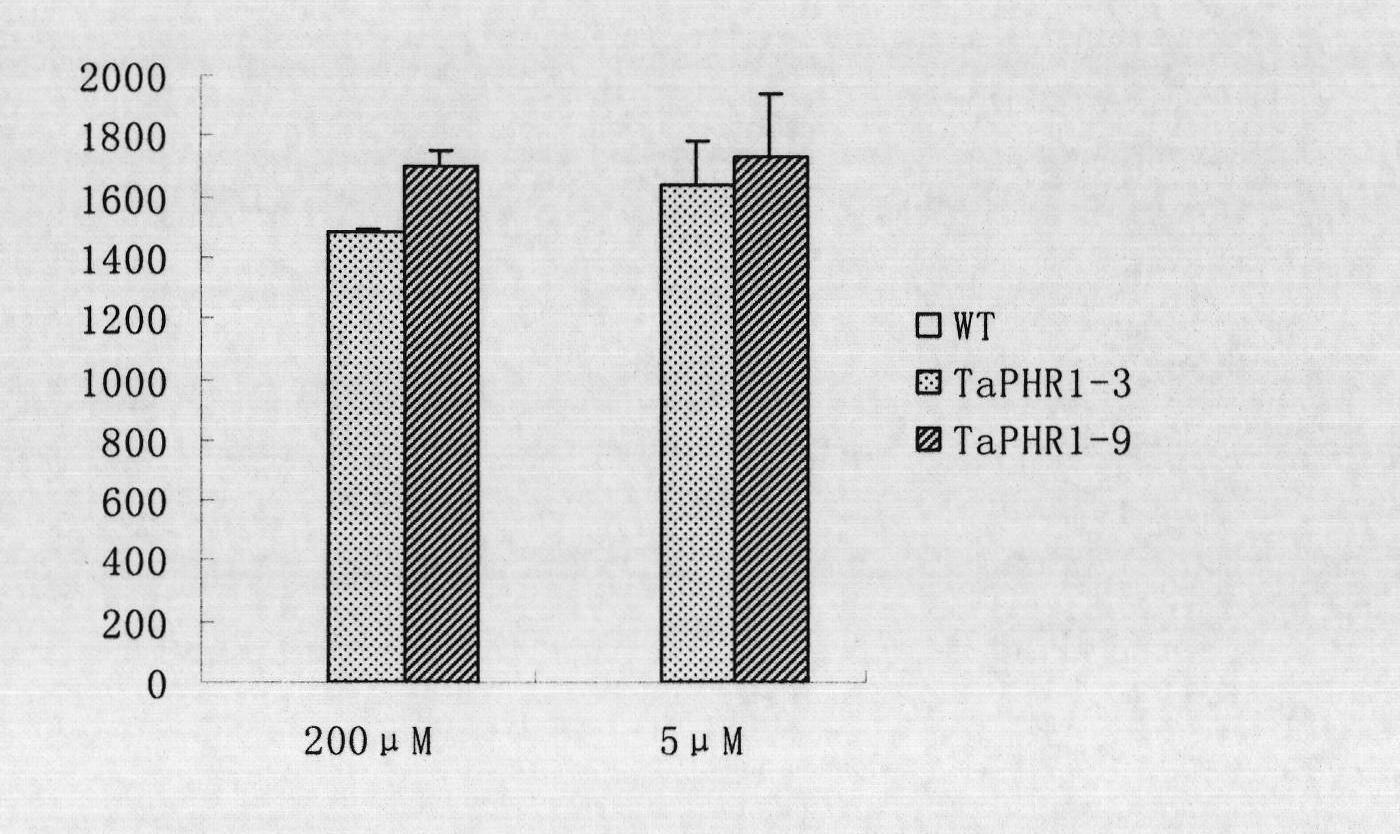Phosphorus deficiency response regulatory protein and coding gene and application thereof
A gene and encoding technology, applied in phosphorus deficiency response regulatory protein and its encoding gene and application field, can solve problems such as difficult to meet the needs of plant growth and development, increase in cost of agricultural products, damage to geological environment, etc., to increase root length and save energy. Resources, the effect of reducing soil environmental pollution
- Summary
- Abstract
- Description
- Claims
- Application Information
AI Technical Summary
Problems solved by technology
Method used
Image
Examples
Embodiment 1
[0039] Embodiment 1, discovery of TaPHR1 protein and its coding gene
[0040] According to the amino acid sequences of AtPHR1 (At4g28610) of Arabidopsis and CrPSR1 (AF174480) of Chlorella, the NCBI dbEST database was searched, and the wheat EST sequence that might encode the PHR1 gene was obtained according to the homology, length and domain analysis of the predicted amino acid sequence , which are respectively BE419425, BE591320, BQ806133, CA650533, CD453381, CD886393 and CK210329, and were compared and analyzed by software.
[0041] Primers were designed to amplify the target fragment using the cDNA of wheat (wheat variety Xiaoyan 54) as a template. After sequencing, a cDNA sequence of about 1.5kb was obtained, containing a complete ORF, which was presumed to encode a polypeptide consisting of 451 amino acid residues, which was close to AtPHR1 (409aa) in size, and contained typical MYB and Coiled-coil domains.
[0042] The protein shown in Sequence 1 of the sequence listing...
Embodiment 2
[0043] Embodiment 2, the acquisition and identification of transgenic plants
[0044] 1. Cloning of TaPHR1 gene
[0045] The total RNA of wheat variety Xiaoyan 54 was extracted with the Trizol reagent of Invetrogen Company, and after DNase I (RNase-free) treatment, 4 μg was reverse-transcribed with the M-MLV reverse transcriptase of Promega Company to synthesize the first strand of cDNA. It is used as a template for PCR amplification to obtain a PCR amplification product (TaPHR1 gene).
[0046] The sequence of PCR primers (introducing the Sal I restriction site in the forward primer; removing the stop codon TAA in the reverse primer and introducing the BamH I restriction site) is as follows:
[0047] Forward primer: 5′-TCA GTC GAC ATGAGGAGGTGTGATCTGAG-3';
[0048] Reverse primer: 5′-AGT GGATCC ACTATCATGCACCCTTC-3'.
[0049] PCR reaction system: 39.5 μl of ultrapure water, 5 μl of 10×PCR buffer, 2 μl of template, 1 μl of forward and reverse primers with a concentration o...
PUM
 Login to View More
Login to View More Abstract
Description
Claims
Application Information
 Login to View More
Login to View More - R&D
- Intellectual Property
- Life Sciences
- Materials
- Tech Scout
- Unparalleled Data Quality
- Higher Quality Content
- 60% Fewer Hallucinations
Browse by: Latest US Patents, China's latest patents, Technical Efficacy Thesaurus, Application Domain, Technology Topic, Popular Technical Reports.
© 2025 PatSnap. All rights reserved.Legal|Privacy policy|Modern Slavery Act Transparency Statement|Sitemap|About US| Contact US: help@patsnap.com



